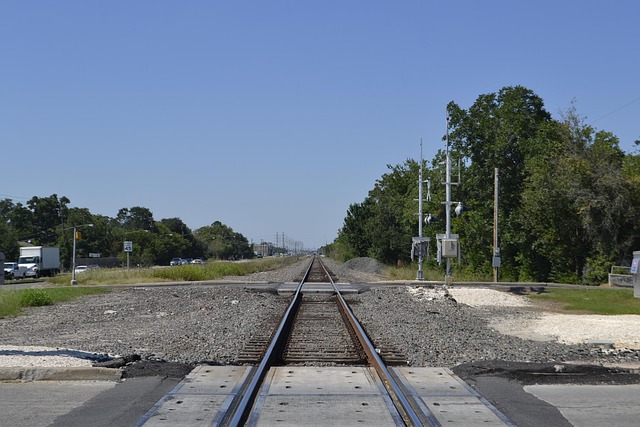Head injuries among cyclists are a significant concern. While helmets aren't mandatory everywhere, their use, along with understanding vehicle dynamics and blind spots, is crucial for safety. Selecting the right helmet based on riding style and terrain, proper fitting, regular inspections, and following Select Road Safety Tips can substantially reduce head injury risks. Senior drivers should consider refresher courses. By combining these measures, cyclists can enhance their overall protection on the road.
Cycling is a thrilling activity, but it comes with risks, especially head injuries. Understanding these dangers is the first step towards ensuring your safety. This article guides you through the essential aspects of cyclist head protection. From recognizing risk factors to choosing the right helmet, fitting techniques, and road safety tips, we cover everything you need to know to ride with confidence. Learn how to navigate the roads safely and explore global initiatives dedicated to promoting cyclist well-being.
- Understanding Cyclist Head Injuries: The Risk Factors
- Choosing the Right Helmet: Types and Standards
- Fitting Your Helmet: Ensuring Maximum Protection
- Road Safety Tips: Riding Awareness and Defense
- Beyond Helmets: Additional Safety Measures for Cyclists
- Global Initiatives: Promoting Cyclist Safety on Roads
Understanding Cyclist Head Injuries: The Risk Factors

Cyclist head injuries are a serious concern on the road, accounting for a significant number of fatalities and severe disabilities among cyclists. Understanding the risk factors associated with these injuries is crucial in promoting road safety. One of the primary hazards cyclists face is the potential for collisions with motor vehicles, especially when sharing roads with faster traffic.
Many head injuries occur due to a lack of protection—wearable helmets are not mandatory in all jurisdictions, and many cyclists opt not to wear them. Additionally, understanding blind spots while changing lanes or merging with traffic is vital; a driver’s limited visibility can lead to sudden collisions. Airbag safety, though commonly associated with cars, is also relevant for cyclists, especially when interacting with vehicles equipped with airbag systems during a collision. Selecting the right road safety tips, including wearing appropriate protective gear and being aware of vehicle dynamics, can significantly reduce the risk and impact of potential head injuries among cyclists.
Choosing the Right Helmet: Types and Standards

When it comes to choosing a helmet for cycling, selecting the right one is paramount for road safety. There are various types available, each designed with specific features catering to different riding styles and needs. For instance, road helmets are lightweight and streamlined, offering optimal air resistance for speed enthusiasts. Mountain bike helmets, on the other hand, boast robust construction and impact protection, ideal for navigating rough terrain.
Understanding safety standards is crucial as well. Look for helmets that meet recognized certification such as CE, CPSC, or NOCSAE. These standards ensure the helmet provides adequate protection against impacts. Remember, proper fitting is key; a well-fitted helmet should sit securely on your head with no movement, ensuring you follow road safety tips and avoid potential triggers like road rage while maintaining safe following distances in traffic. For parents, teaching children’s understanding of road safety through helmet selection can foster a safer environment, promoting responsible riding habits from an early age.
Fitting Your Helmet: Ensuring Maximum Protection

A properly fitted helmet is your first line of defense on the road. When selecting and adjusting your helmet, ensure it fits snugly and securely on your head, covering the top of your ears and sitting just above your brow. Refer to the manufacturer’s instructions for the correct sizing, as helmets come with adjustable straps for a personalized fit. This simple step significantly reduces the risk of severe head injuries in case of a fall or collision.
Remember, road safety tips go beyond just wearing a helmet. Regularly inspect your helmet for any signs of damage and ensure the chin strap is secure. Additionally, consider the benefits of senior driver refresher courses, which can enhance elderly driver safety considerations, promoting not only better driving habits but also peace of mind. Just like staying alert and aware while driving, maintaining up-to-date skills and knowledge is crucial to navigate the roads safely, whether you’re a young or seasoned cyclist.
Road Safety Tips: Riding Awareness and Defense

Cyclists navigating roads share the same responsibilities as drivers, but their smaller size and lack of protective enclosure make them more vulnerable. To ensure safety while cycling, it’s crucial to understand and implement select road safety tips. First, maintain awareness at all times; stay alert for potential hazards and be visible to others by wearing bright clothing and using reflectors or lights, especially during low-light conditions. Second, anticipate the actions of other drivers and pedestrians; observe their behaviors to predict future movements, which can help you avoid sudden collisions.
When riding in areas with heavy traffic or construction zones, follow specific guidelines for driving in construction zones safely. Reduce your speed and maintain a safe distance from vehicles and workers. Be prepared for unexpected lane changes or obstructions by keeping a firm grip on the handlebars and being ready to maneuver swiftly but calmly. Remember, understanding how to choose the right car seat for toddlers can provide insights into protecting young passengers, addressing a different aspect of road safety entirely. Above all, stay calm and avoid road rage triggers; aggressive behavior not only endangers you but also increases the risk of accidents.
Beyond Helmets: Additional Safety Measures for Cyclists

While a well-fitted bicycle helmet is an essential component of any cyclist’s safety gear, it’s not the only measure to consider. Implementing additional road safety tips can significantly enhance overall protection during every ride. A cycle helmet fitting guide for adults and kids should be a standard reference, ensuring optimal coverage and comfort without hindering vision or hearing.
Moreover, cyclists should stay informed about local traffic laws and road signs, especially regarding shared spaces. Regularly maintaining their bicycles, including checks on brakes and tires, is crucial. Similarly, considering the benefits of senior driver refresher courses for older cyclists can refresh vital skills. Just as an emergency kit is essential in every vehicle, a compact kit tailored for cyclists should include basic first aid supplies and tools for minor repairs on the go.
Global Initiatives: Promoting Cyclist Safety on Roads

Around the globe, initiatives are being launched to promote cyclist safety on roads. Many countries have implemented strict laws mandating helmet use for cyclists, with fines and penalties for non-compliance. These measures reflect a growing recognition of the importance of road safety for all users, including cyclists.
In addition to legal frameworks, global efforts focus on educating both cyclists and drivers alike. Select road safety tips, such as those tailored for driving in construction zones safely, emphasize shared responsibility. Promoting awareness about vulnerable road users, like cyclists, helps foster a culture of caution and consideration. Similarly, providing a bicycle helmet fitting guide for adults and kids ensures that everyone understands the proper use and importance of protective gear. Even for seniors, refresher courses offer significant benefits, keeping driving skills sharp and safe riding habits top of mind.
Cycling is a wonderful way to stay active and explore, but ensuring your safety should always be a top priority. By understanding the risks of head injuries, choosing the right helmet that meets industry standards, and properly fitting it, you significantly reduce potential harm. Additionally, adopting defensible riding habits and being aware of road conditions are essential components of road safety tips for cyclists. Remember, safety extends beyond helmets; global initiatives focus on promoting cyclist safety to create a more secure environment for everyone on the roads. Always stay vigilant, follow local regulations, and prioritize your well-being while cycling.
